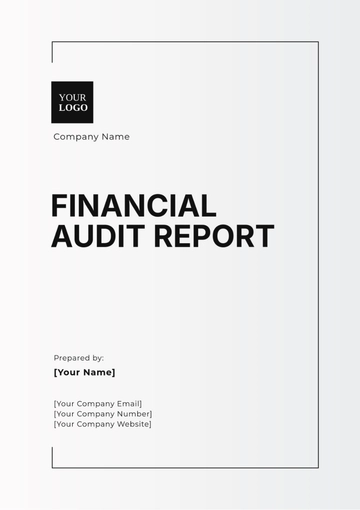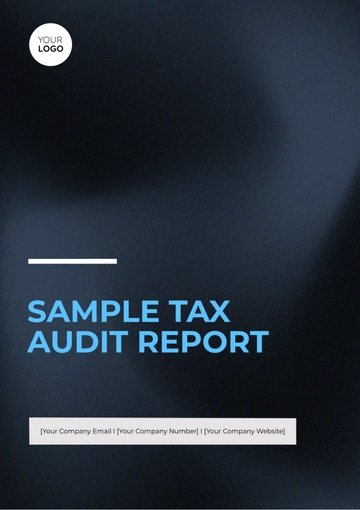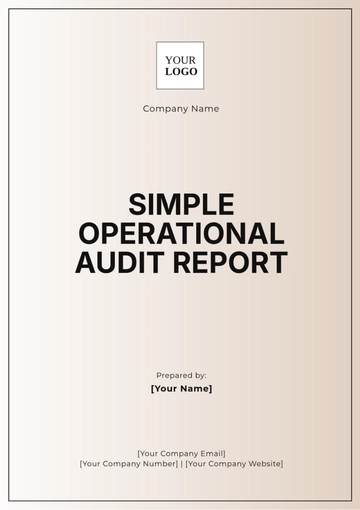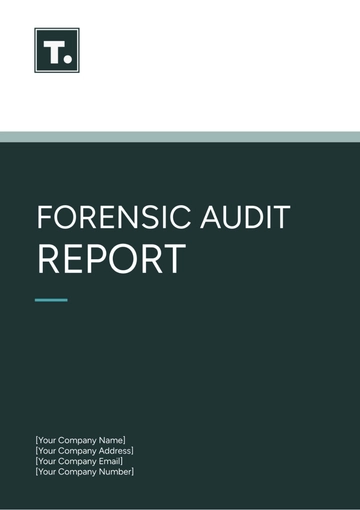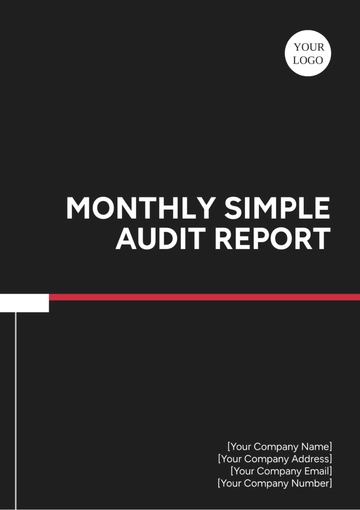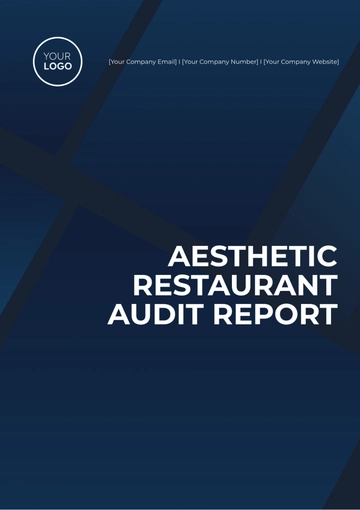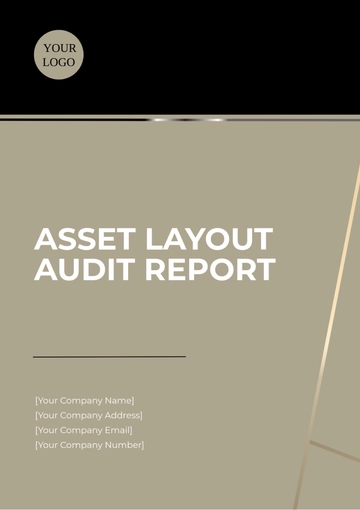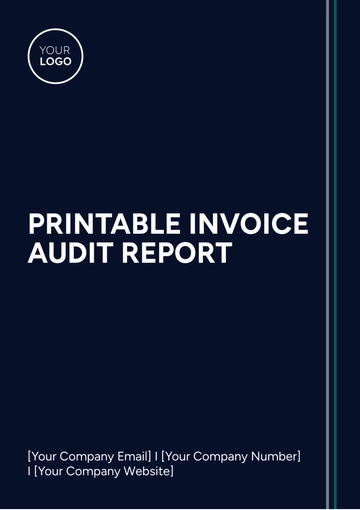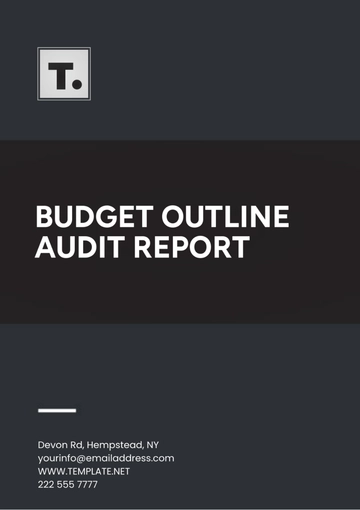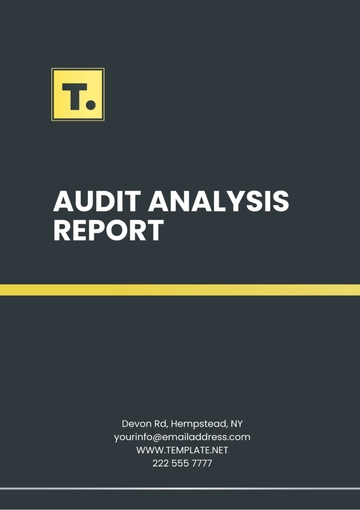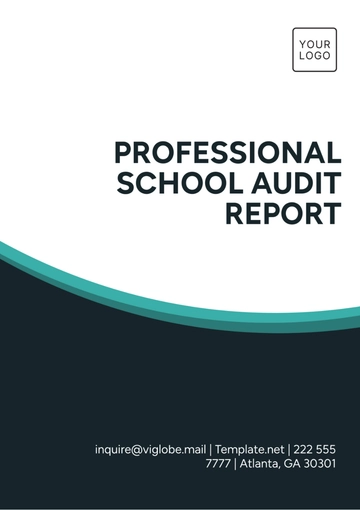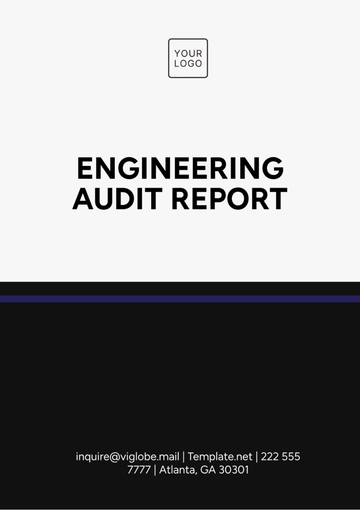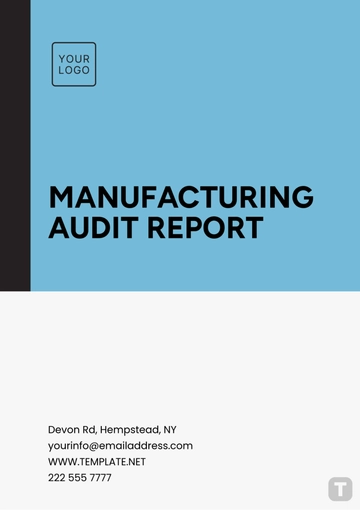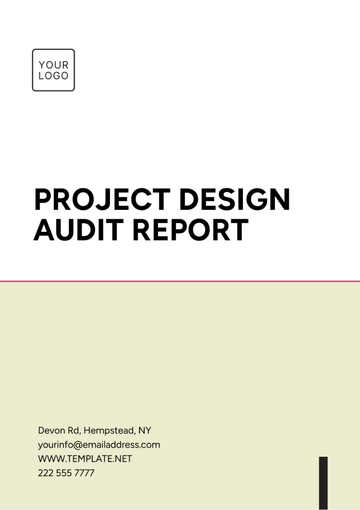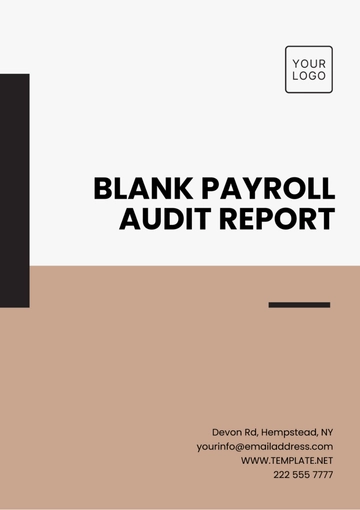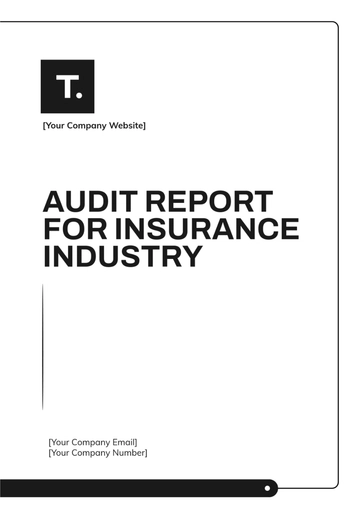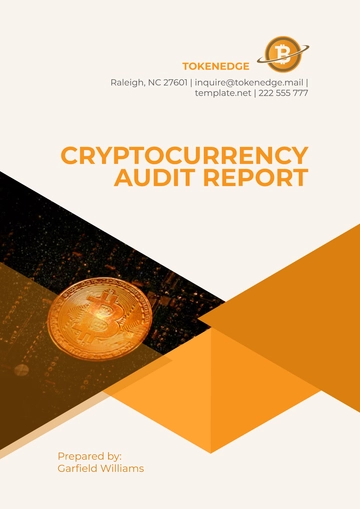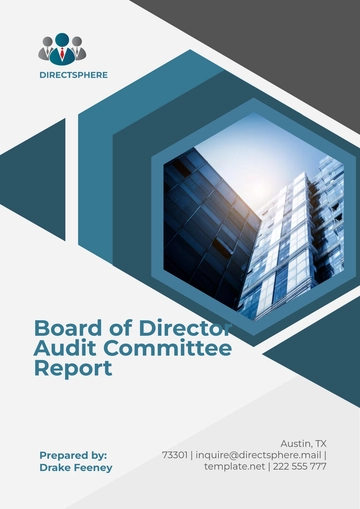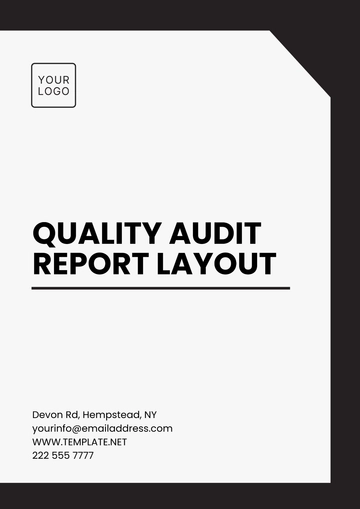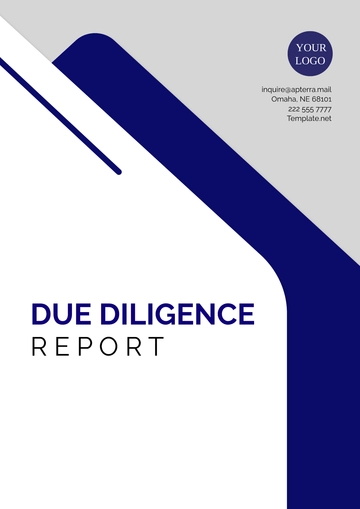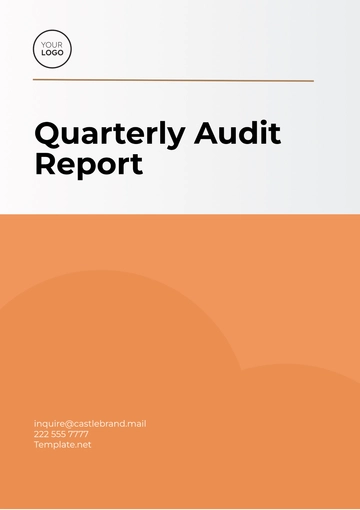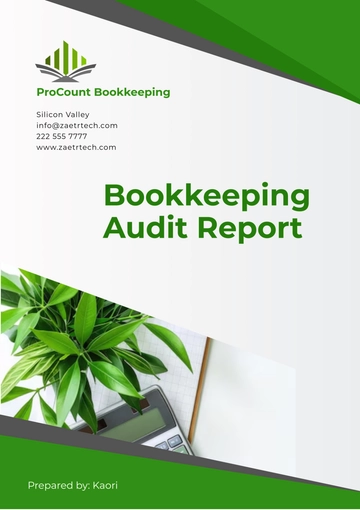Free Administration Procurement Audit Report
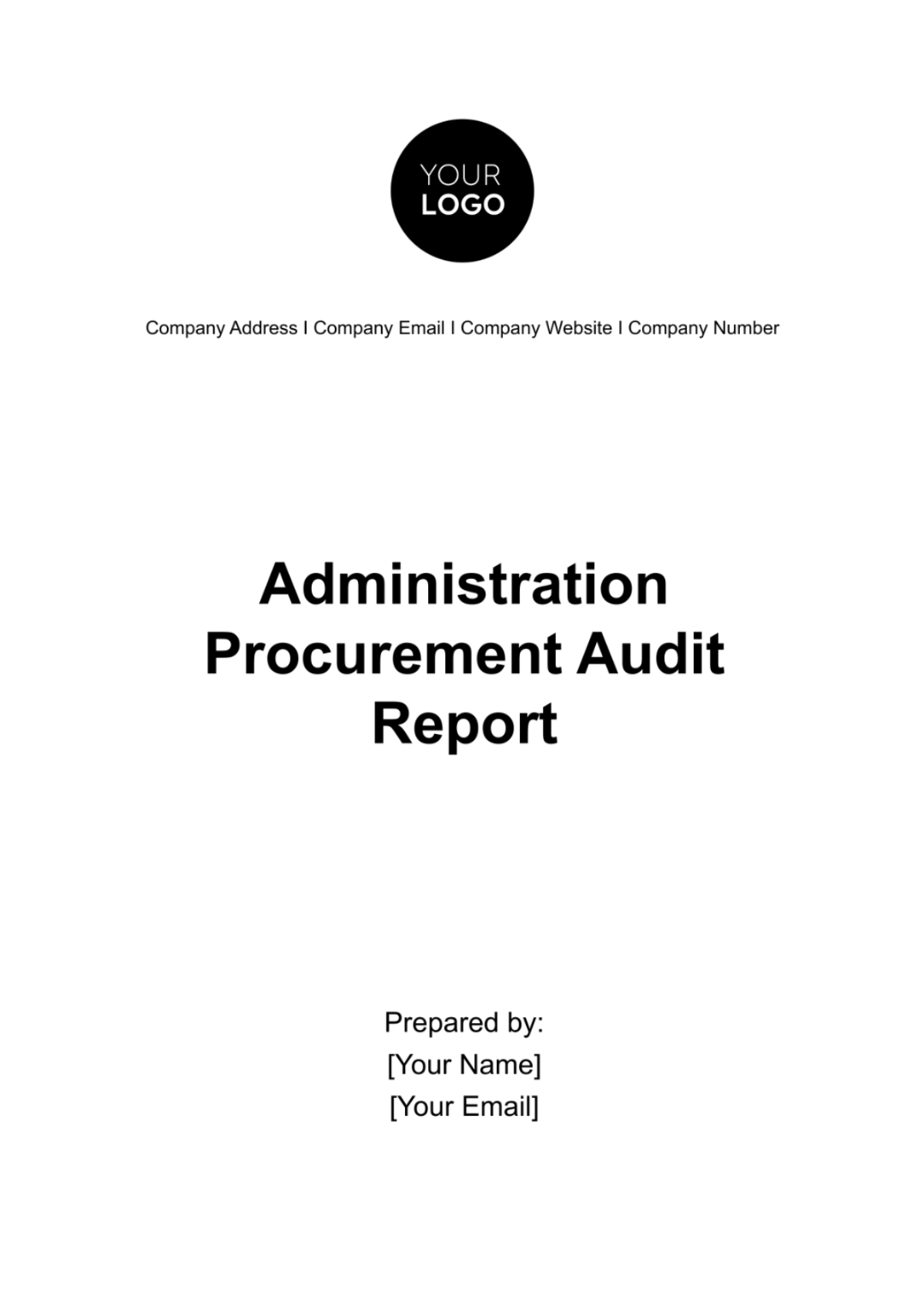
I. Executive Summary:
The Administration Procurement Audit Report for [Your Company Name] provides a comprehensive assessment of the organization's procurement practices and processes. The audit aimed to evaluate compliance with procurement policies and regulations, assess the effectiveness and efficiency of procurement procedures, and identify areas for improvement. Key findings highlight strengths and weaknesses in procurement operations, accompanied by actionable recommendations to enhance procurement efficiency, transparency, and accountability.
II. Introduction:
[Your Company Name] operates in the [Industry] industry, providing innovative software solutions for data analytics and business intelligence. Effective procurement practices are essential for ensuring the availability of quality goods and services while optimizing costs and mitigating risks. The Administration Procurement Audit was conducted to evaluate the organization's procurement activities and provide insights for improvement.
III. Methodology:
The systematic approach used to conduct the Administration Procurement Audit for [Your Company Name] is detailed below. It encompasses various techniques and procedures to assess compliance, effectiveness, and efficiency in procurement practices.
A. Planning Phase:
During the planning phase, meticulous attention was given to defining clear objectives, delineating the audit's scope, and allocating resources effectively. This phase laid the groundwork for a comprehensive assessment of [Your Company Name]'s procurement practices.
Objective Definition: The audit objectives were defined to evaluate compliance with procurement policies and regulations, assess the effectiveness of procurement procedures, and identify areas for improvement.
Scope Determination: The scope of the audit was defined to include all aspects of procurement activities within [Your Company Name], spanning vendor selection, bidding processes, contract management, and performance monitoring.
Resource Allocation: Personnel and resources were allocated to ensure the audit could be conducted effectively, including assigning audit team members, scheduling interviews, and securing necessary documentation.
B. Data Collection:
Data collection unfolded through a multi-faceted approach, comprising exhaustive document reviews, insightful interviews with key personnel, and astute observations of procurement processes. Each method was meticulously chosen to extract diverse perspectives and insights into [Your Company Name]'s procurement landscape.
Document Reviews: Relevant procurement policies, regulations, contracts, and internal guidelines were reviewed to assess compliance and identify key areas of focus.
Interviews: Key personnel involved in procurement activities, including procurement officers, finance managers, and department heads, were interviewed to gather insights into procurement processes, challenges, and opportunities for improvement.
Observations: Direct observations of procurement activities and processes were conducted to supplement information obtained through document reviews and interviews.
C. Analysis and Evaluation:
In the analysis and evaluation phase, a keen focus was placed on assessing compliance, evaluating processes, and uncovering actionable insights from quantitative data. This rigorous examination aimed to illuminate strengths, weaknesses, and opportunities within [Your Company Name]'s procurement framework.
Compliance Assessment: The procurement policies and procedures were evaluated against applicable laws, regulations, and industry best practices to assess compliance.
Process Evaluation: Procurement processes were analyzed to assess efficiency, effectiveness, and transparency, including vendor selection, bidding processes, contract negotiation, and performance monitoring.
Data Analysis: Quantitative data related to procurement performance indicators, such as cycle times, cost savings, and vendor performance metrics, were analyzed to identify trends and areas for improvement.
D. Findings Compilation:
Compiling findings involved distilling strengths, weaknesses, and key insights into a cohesive narrative, supported by clear descriptions and evidence. This stage served to crystallize the audit's discoveries, paving the way for targeted recommendations.
Identification of Strengths: Strengths in procurement operations were identified based on compliance, efficiency, effectiveness, and transparency.
Identification of Weaknesses: Weaknesses and areas for improvement were identified based on gaps in compliance, inefficiencies, ineffective processes, and lack of transparency.
Documentation of Key Findings: Findings were documented systematically, providing clear descriptions and supporting evidence to facilitate understanding and analysis.
E. Recommendations Development:
Crafting recommendations entailed synthesizing findings into actionable strategies tailored to address identified weaknesses and elevate procurement practices. Each recommendation was meticulously curated, grounded in a clear rationale, and informed by potential benefits for [Your Company Name].
Actionable Recommendations: Based on the findings, actionable recommendations were developed to address identified weaknesses, enhance procurement processes, and improve compliance.
Prioritization: Recommendations were prioritized based on severity, impact, feasibility, and resource requirements to guide implementation efforts effectively.
Clear Rationale: Each recommendation was accompanied by a clear rationale, explaining the underlying issues it addresses and the potential benefits of implementation.
F. Reporting:
Reporting marked the culmination of the audit process, wherein findings and recommendations were meticulously organized into a comprehensive and insightful document. Through thorough review and validation, the final report ensured accuracy, clarity, and relevance before dissemination to stakeholders.
Drafting the Report: The findings and recommendations were compiled into a comprehensive report structure, including an executive summary, introduction, methodology, findings, recommendations, conclusion, and appendices.
Review and Validation: The draft report underwent review and validation by relevant stakeholders, including audit team members, management, and other key personnel involved in procurement activities.
Finalization: The report was finalized based on feedback received during the review process, ensuring accuracy, clarity, and completeness before dissemination to stakeholders.
IV. Procurement Policies and Regulations:
The audit reviewed [Your Company Name]'s procurement policies and procedures to assess compliance with applicable laws, regulations, and internal guidelines. The following list outlines the key procurement policies and regulations implemented during the audit:
Legal Compliance: Compliance with local, state, and federal procurement laws and regulations, ensuring adherence to legal requirements in procurement activities.
Ethical Standards: Adherence to ethical standards and codes of conduct in procurement processes, including conflict of interest disclosures, fair competition, and anti-corruption measures.
Internal Procurement Policies: Compliance with internal procurement policies and procedures established by [Your Company Name], governing vendor selection, bidding processes, contract management, and procurement documentation.
Financial Regulations: Compliance with financial regulations governing procurement activities, including budgetary constraints, expenditure approvals, and financial reporting requirements.
Vendor Qualification: Procedures for vendor qualification, evaluation, and selection, ensuring that vendors meet specified criteria for quality, reliability, and financial stability.
Contract Management: Guidelines for contract negotiation, execution, and administration, including contract terms and conditions, performance monitoring, and dispute resolution mechanisms.
Record-Keeping Requirements: Requirements for procurement documentation, including purchase orders, contracts, invoices, and other records, to ensure completeness, accuracy, and compliance with regulatory standards.
Reporting Obligations: Obligations for reporting procurement activities, including financial disclosures, audit requirements, and transparency measures to stakeholders and regulatory authorities.
V. Procurement Process Evaluation:
The evaluation of [Your Company Name]'s procurement process revealed both strengths and areas for improvement, providing insights into the effectiveness and efficiency of procurement activities. The following table highlights key aspects of the procurement process:
Aspects | Strong Points | Areas for Improvement |
|---|---|---|
Vendor Selection and Evaluation | Demonstrates a structured approach using predefined criteria. | Need for formalized vendor evaluation procedures for consistency and transparency. |
Bidding Processes | Conducts competitive bidding processes driving cost savings. | Streamline bidding process with technology solutions and clearer guidelines. |
Contract Management | Maintains comprehensive contract management practices. | Improve proactive contract monitoring and risk management. |
Procurement Documentation | Maintains adequate documentation supporting transparency and accountability. | Enhance documentation practices for completeness, accuracy, and consistency. |
Technology Utilization | Utilizes technology tools to streamline processes and improve data visibility. | Further leverage technology for advanced analytics and strategic decision-making. |
VI. Findings
The following key findings are observed during the procurement audit:
Strengths:
Adherence to procurement policies and regulations is generally robust, reflecting a commitment to compliance.
Timely execution of contracts and purchase orders demonstrates efficiency in procurement processes.
Strong vendor relationships and communication channels contribute to smooth procurement operations.
Adequate procurement documentation practices ensure transparency and accountability in transactions.
Utilization of technology tools, such as procurement management software, enhances data visibility and process efficiency.
Weaknesses:
Lack of formalized vendor evaluation procedures results in inconsistencies and subjectivity in vendor selection.
Incomplete or inconsistent procurement documentation practices hinder audit readiness and regulatory compliance.
Limited utilization of technology for advanced analytics constrains opportunities for data-driven decision-making.
Inefficiencies in contract monitoring and risk management processes pose risks of non-compliance and contract disputes.
Opportunities exist for streamlining bidding processes and enhancing transparency in vendor selection.
Opportunities for Improvement:
Implement a formalized vendor evaluation framework to ensure consistency and transparency in vendor selection decisions.
Enhance procurement documentation practices to ensure completeness, accuracy, and compliance with regulatory standards.
Invest in advanced analytics tools to leverage procurement data for strategic decision-making and performance optimization.
Strengthen contract management practices to improve proactive monitoring and risk mitigation.
Streamline bidding processes and provide clearer guidelines to enhance transparency and fairness in vendor selection.
VII. Recommendations:
Based on the evaluation and findings, the following recommendations are proposed to address identified weaknesses and enhance the procurement process of [Your Company Name]:
Formalize Vendor Evaluation Procedures:
Develop a standardized vendor evaluation framework outlining criteria for vendor selection, including quality, price, reliability, and past performance.
Implement clear procedures for vendor evaluation to ensure consistency, transparency, and objectivity in vendor selection decisions.
Provide training to procurement staff on the use of the evaluation framework and adherence to established procedures.
Streamline Bidding Processes:
Explore the implementation of procurement management software to automate and streamline bidding processes, including bid solicitation, evaluation, and award.
Develop standardized bidding documents and templates to provide clear guidelines and timelines for bidders, enhancing transparency and fairness in the bidding process.
Conduct regular reviews of bidding processes to identify opportunities for simplification and efficiency improvement.
Enhance Contract Monitoring and Risk Management:
Invest in contract management software to facilitate real-time tracking of contract milestones, obligations, and performance metrics.
Establish proactive contract monitoring procedures to identify and address potential risks, deviations, and non-compliance issues promptly.
Provide training to procurement and contract management staff on risk identification, assessment, and mitigation strategies.
Improve Documentation Practices:
Develop standardized documentation templates and guidelines to ensure completeness, accuracy, and consistency across procurement transactions.
Implement document management systems to centralize procurement documentation, improving accessibility, version control, and audit readiness.
Conduct periodic audits of procurement documentation to verify compliance with regulatory requirements and internal policies.
Leverage Technology for Advanced Analytics:
Evaluate advanced analytics tools and technologies to enhance data analytics capabilities in procurement, including spend analysis, supplier performance tracking, and risk assessment.
Provide training and resources to procurement staff on the use of analytics tools and interpretation of procurement data insights.
Foster a data-driven culture within the procurement department, encouraging the use of analytics to inform strategic decision-making and optimize procurement outcomes.
Establish Continuous Improvement Mechanisms:
Implement a formalized process for regular review and evaluation of procurement practices, performance metrics, and stakeholder feedback.
Establish cross-functional teams or committees to drive continuous improvement initiatives, identify opportunities for innovation, and monitor progress against improvement goals.
Foster a culture of continuous learning and development within the procurement department, encouraging staff to seek professional development opportunities and stay updated on industry best practices.
VIII. Conclusion:
In conclusion, the Administration Procurement Audit has provided valuable insights into the procurement process of [Your Company Name], highlighting both strengths and areas for improvement. Through a systematic evaluation of vendor selection, bidding processes, contract management, procurement documentation, and technology utilization, opportunities for enhancing efficiency, transparency, and effectiveness have been identified.
Moving forward, the implementation of the proposed recommendations will be crucial in addressing the identified weaknesses and optimizing procurement operations. By formalizing vendor evaluation procedures, streamlining bidding processes, improving contract monitoring and documentation practices, leveraging technology for advanced analytics, and fostering a culture of continuous improvement, [Your Company Name] can enhance its procurement function, driving greater value and efficiency across the organization. With a commitment to ongoing evaluation, adaptation, and improvement, [Your Company Name] is well-positioned to achieve excellence in procurement practices and contribute to overall organizational success.
IX. Appendices:
Interview Transcripts: Transcripts of interviews conducted with key personnel involved in procurement activities, providing additional insights into procurement processes and challenges.
Sample Procurement Documents: Examples of procurement documentation, including purchase orders, contracts, invoices, and vendor communications, demonstrating documentation practices and compliance with regulatory requirements.
Data Analysis Tables: Tables presenting quantitative data related to procurement performance indicators, such as cycle times, cost savings, and vendor performance metrics, supporting the evaluation findings.
Procurement Policies and Procedures: Copies of relevant procurement policies, procedures, and guidelines established by [Your Company Name], outlining regulatory compliance and internal requirements.
Vendor Evaluation Framework: A standardized vendor evaluation framework outlining criteria for vendor selection, including quality, price, reliability, and past performance, facilitating consistency and transparency in vendor selection decisions.
Bidding Documents and Templates: Standardized bidding documents and templates providing clear guidelines and timelines for bidders, enhancing transparency and fairness in the bidding process.
Contract Management Software Proposal: Proposal for the implementation of contract management software to facilitate real-time tracking of contract milestones, obligations, and performance metrics, improving contract management practices.
Documentation Templates and Guidelines: Standardized documentation templates and guidelines ensuring completeness, accuracy, and consistency across procurement transactions, supporting regulatory compliance and audit readiness.
Advanced Analytics Tools Evaluation: Evaluation of advanced analytics tools and technologies for enhancing data analytics capabilities in procurement, including spend analysis, supplier performance tracking, and risk assessment.
Continuous Improvement Plan: Formalized plan for regular review and evaluation of procurement practices, performance metrics, and stakeholder feedback, outlining strategies for fostering a culture of continuous improvement within the procurement department.
- 100% Customizable, free editor
- Access 1 Million+ Templates, photo’s & graphics
- Download or share as a template
- Click and replace photos, graphics, text, backgrounds
- Resize, crop, AI write & more
- Access advanced editor
Enhance procurement practices with Template.net's Administration Procurement Audit Report Template. This editable and customizable tool, accessible via Template.net's AI Editor Tool, simplifies audit reporting. With editable fields and customizable sections, you can conduct comprehensive audits of procurement processes, identify areas for improvement, and implement strategic measures to optimize procurement efficiency and compliance.
You may also like
- Sales Report
- Daily Report
- Project Report
- Business Report
- Weekly Report
- Incident Report
- Annual Report
- Report Layout
- Report Design
- Progress Report
- Marketing Report
- Company Report
- Monthly Report
- Audit Report
- Status Report
- School Report
- Reports Hr
- Management Report
- Project Status Report
- Handover Report
- Health And Safety Report
- Restaurant Report
- Construction Report
- Research Report
- Evaluation Report
- Investigation Report
- Employee Report
- Advertising Report
- Weekly Status Report
- Project Management Report
- Finance Report
- Service Report
- Technical Report
- Meeting Report
- Quarterly Report
- Inspection Report
- Medical Report
- Test Report
- Summary Report
- Inventory Report
- Valuation Report
- Operations Report
- Payroll Report
- Training Report
- Job Report
- Case Report
- Performance Report
- Board Report
- Internal Audit Report
- Student Report
- Monthly Management Report
- Small Business Report
- Accident Report
- Call Center Report
- Activity Report
- IT and Software Report
- Internship Report
- Visit Report
- Product Report
- Book Report
- Property Report
- Recruitment Report
- University Report
- Event Report
- SEO Report
- Conference Report
- Narrative Report
- Nursing Home Report
- Preschool Report
- Call Report
- Customer Report
- Employee Incident Report
- Accomplishment Report
- Social Media Report
- Work From Home Report
- Security Report
- Damage Report
- Quality Report
- Internal Report
- Nurse Report
- Real Estate Report
- Hotel Report
- Equipment Report
- Credit Report
- Field Report
- Non Profit Report
- Maintenance Report
- News Report
- Survey Report
- Executive Report
- Law Firm Report
- Advertising Agency Report
- Interior Design Report
- Travel Agency Report
- Stock Report
- Salon Report
- Bug Report
- Workplace Report
- Action Report
- Investor Report
- Cleaning Services Report
- Consulting Report
- Freelancer Report
- Site Visit Report
- Trip Report
- Classroom Observation Report
- Vehicle Report
- Final Report
- Software Report

